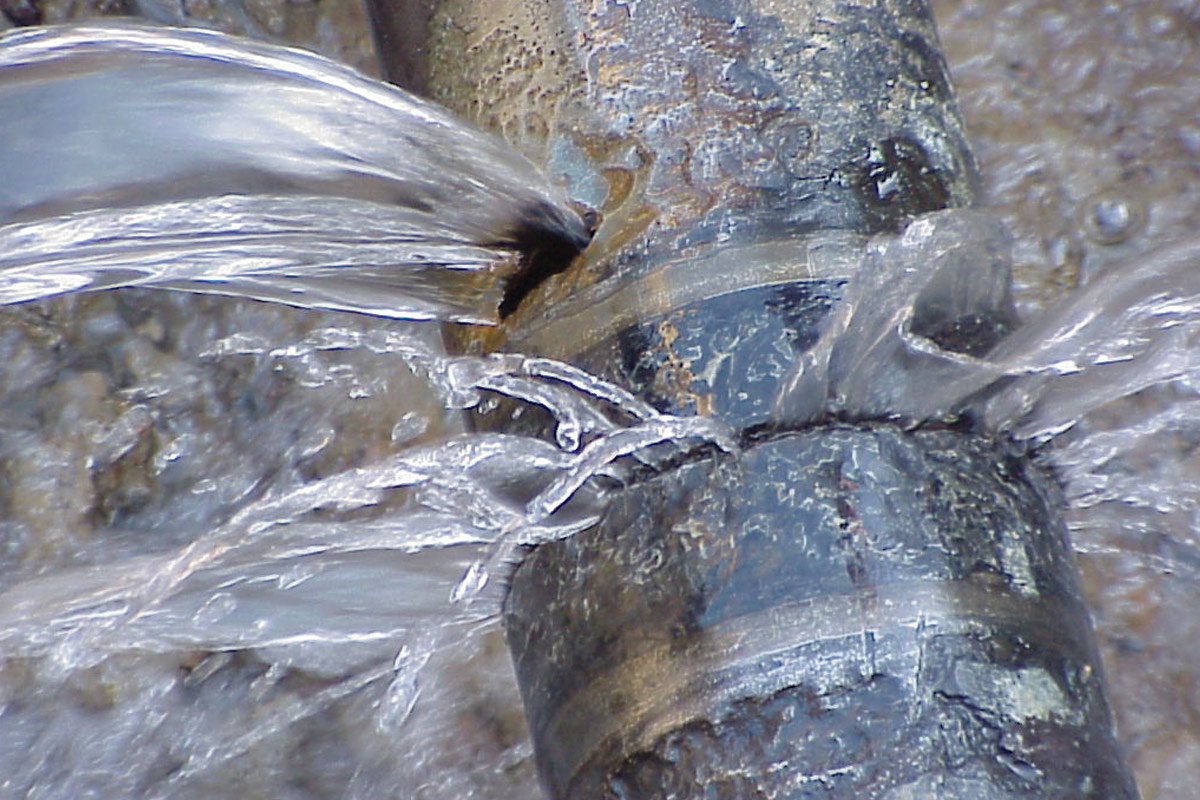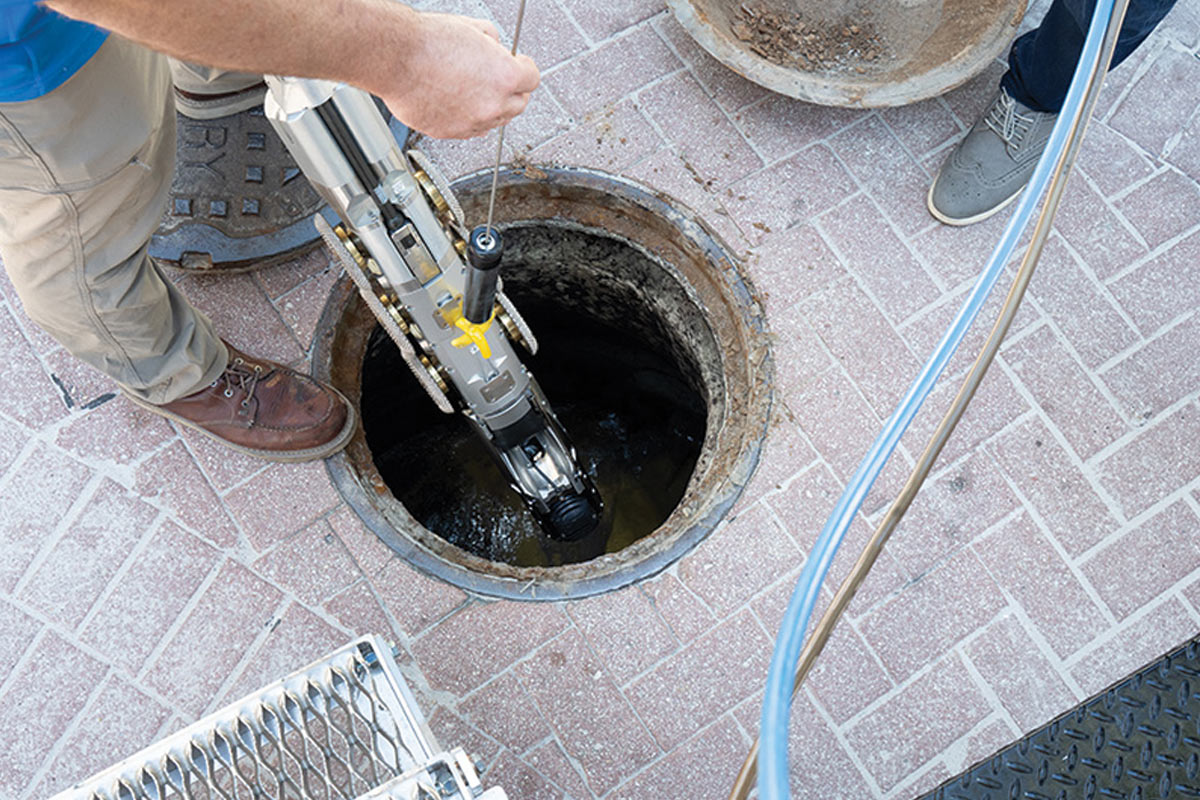Product Profile Study
June 13, 2014
 Over years of use, sewer lines suffer damage that can include holes, cracks and erosion. To ensure the continued function and safety of aging collection systems, owners must routinely undertake extensive pipe repairs and rehabilitation. Various technologies are used for this purpose.
Over years of use, sewer lines suffer damage that can include holes, cracks and erosion. To ensure the continued function and safety of aging collection systems, owners must routinely undertake extensive pipe repairs and rehabilitation. Various technologies are used for this purpose.One such technology is the Janssen Process, where a proprietary, two-component polyurethane resin is injected into defects and the surrounding pipe bedding to seal and stabilize damage. Janssen was invented in Germany, and New Jersey-based Pipeline Renewal Technologies represents the technology exclusively in the United States, licensing it to rehabilitation contractors, such as Layne Inliner. An extensive study was recently conducted to determine how sustainably this process repairs pipe, and this article summarizes the findings of that study.
Today, repair and rehabilitation are the solutions of choice to extend the service life of damaged sewer pipe. Compared to replacement, repair and rehabilitation require considerably less investment. A range of available repair technologies is described DIN EN 15885. One such method is the Janssen Process, a resin injection technique for point repairs that has been used widely for nearly 30 years, and which was introduced to the U.S. market five years ago by Pipeline Renewal Technologies. Until recently, however, there had been only anecdotal data documenting the extent to which this process positively and sustainably affects a pipe’s useful life and structural stability — not scientific proof. Now, the Institute for Construction Machinery and Operation at the Rhinish-Westphalian Technical University (RWTH) in Aachen, Germany, has proven the efficacy of Janssen Process in an extensive study.
For this study, sections of factory-condition and damaged clay pipe (82 ft each) were installed in a test stand of sand and gravel bedding under a cover of approximately 7 ft. The damage inflicted simulated what is encountered in everyday conditions: circular holes with voids in the bedding behind, intersecting cracks, vertical cracks spanning the full height of the pipe, and longitudinal cracks. The consequences from these types of damage can be significant. On one hand, there is danger that escaping sewage will pollute groundwater. One the other hand, infiltrating groundwater will diminish treatment system capacity, as well as create voids around the pipe that can hasten failure and cause sinkholes.
 Rehabilitating the Damaged Pipe
Rehabilitating the Damaged Pipe
After the pipes were installed in the test stand, the damage sections were repaired using the Janssen Process. This process relies on a packer — a 3-ft cylindrical robot with an inflatable rubber shroud that directs high-pressure resin into damaged areas without reducing the pipe’s cross section. The packer is positioned at the point of repair, where it injects a special two-component polyurethane-resin that seals damaged portions of the pipe, and also fills voids behind them, mixing with the soil in place to form a strong aggregate that reestablishes pipe bedding. The process tolerates active groundwater infiltration, and the design of the packer permits flow-through of pipe effluent, so bypass pumping is not typically required. On average, 33 lbs of resin are needed per repair, but this can vary based on the severity of the damage and the size of the backing void to be filled.
The Janssen Process uses a slow-curing resin of a specific viscosity that allows even the smallest cracks (less than 0.1 mm) to be filled completely, and penetrated to reach any surrounding voids. Ultimately, pipe bedding is reestablished and the load-bearing capacity of the original pipe/soil system is restored. The cured resin is also stable in volume, whereas gels typically shrink to a varying extent according to soil moisture.
Excavation and Preparation for Testing
Repairing the damaged test pipes was only the start of the test. The pipes were then excavated from the test stand and load-tested to confirm whether they could withstand crown pressures equal to the original manufacturer’s specifications. Typically, new clay pipe must withstand a minimum crown pressure of 3,289 lbs-force/ft. For a pipe 6.5 ft long, this would equate to an individual load of 21,378 lbs-force.
For application of crown pressure, a test assembly was devised consisting of an I-beam, a hydraulic cylinder and an abutment. The beam would transfer the load from the hydraulic cylinder linearly onto the pipe. In order to avoid deformation of the beam, which would lead to pressure peaks along the pipe’s crown, a beam 12 ft tall was chosen. The maximum testing load was limited to 44,512 lbs-force to avoid movement of the abutment or any deviation of the hydraulic cylinder from the vertical axis.
Load-Testing the Pipe
Both repaired and factory condition pipes were tested. First, a clay pipe with a circular hole (pipe 1) was exposed to pressure that increased at 5 bar/sec until 80 bars were reached (corresponding to a force of 17,985 lbs-force). The pressure increase was periodically interrupted to allow for minor settling and redistribution of tension. After about 10 seconds, the increase rate for the load was reduced to 2 bar/sec, which continued until the pipe failed at a crown pressure of 25,853 lbs-force.
Next, a clay pipe in factory condition (pipe 2) was pressure tested under the same regimen and failed at a crown pressure of 17,085 lbs-force. Since this intact pipe failed unexpectedly soon, the rate of load increase was reduced for subsequent tests and all other test parameters held constant, yielding the following results:
• A pipe with repaired intersecting cracks (pipe 3) failed at a crown pressure of 22,706 lbs-force.
• Another factory-condition pipe (pipe 4) failed at 22,931 lbs-force.
• A pipe with a repaired radial cut (pipe 5) failed at 24,055 lb-force.
 Confirming Load-Bearing Properties of the Repaired Pipe
Confirming Load-Bearing Properties of the Repaired Pipe
This test series yielded some important findings regarding the Janssen Process. Assuming a pipe with unrepaired damage has a reduced load-bearing capacity, these test show resin injection can completely restore the load-bearing capacity of damaged pipe, and even enhance it beyond the manufacturer’s specifications. This is a result not only of bonding and sealing damaged areas, but also rebuilding the bedding for better load transfer.
This conclusion is supported by analysis of the resin that permeated the pipe into the surrounding voids. In one instance, the resin adhering to the pipe and forming the resin body penetrated as far as 6 in. into the soil and weighed 185 lbs. Considering the injected resin weighed 26 lbs and the volume of the void was known, technicians were able to calculate the consolidated aggregate contained approximately 154 lbs of soil.
Analysis of the other pipes presented similar results: The resin body adhering to pipe 3 was comprised of 258 lbs of soil and 31 lbs of injected resin; the resin body adhering to pipe 5 consisted of 203 lbs of soil with 25 lbs of resin. In addition, the regions of the pipe adjacent to the damage were strengthened, safeguarding against future deformation. Moreover, the load-bearing capacity at and near the damaged area was even stronger than other areas due to the structural reinforcement contributed by the external resin body. The properties of the proprietary Janssen Process resin that make this possible are its viscosity and curing time. The resin penetrates the soil, infiltrating even the finest cracks, and exhibits the necessary sealing and stabilizing to affect a structural repair. The tests conducted at RWTU Aachen demonstrated this empirically, scientifically establishing what installers have known for decades — that Janssen process restores the bedding, sealing and structural characteristics of pipe, often to higher standards than those maintained by the original pipe manufacturer.
Niklas Janßen is with Umwelttechnik Franz Janßsen GmbH.

 Rehabilitating the Damaged Pipe
Rehabilitating the Damaged Pipe Confirming Load-Bearing Properties of the Repaired Pipe
Confirming Load-Bearing Properties of the Repaired Pipe


